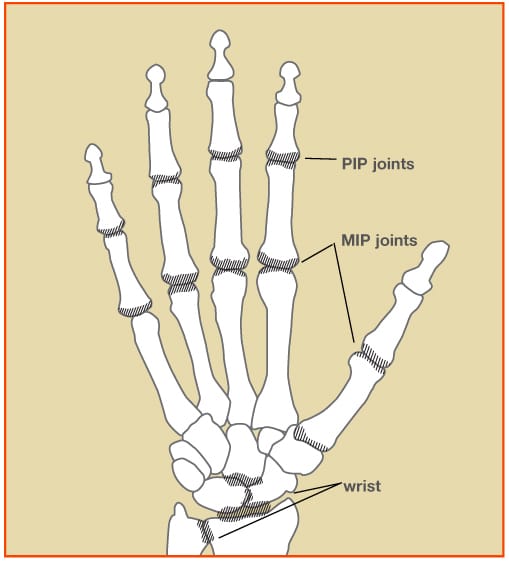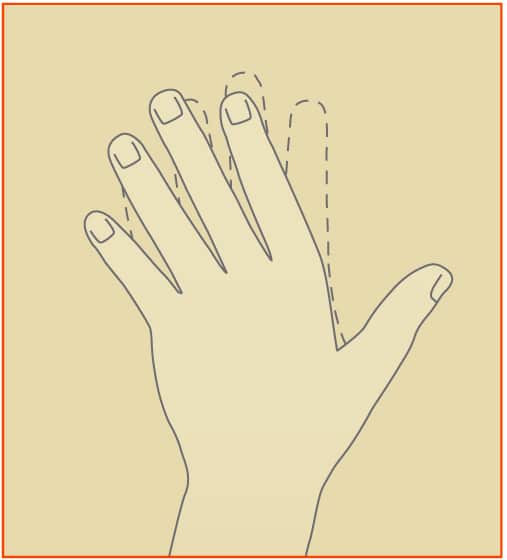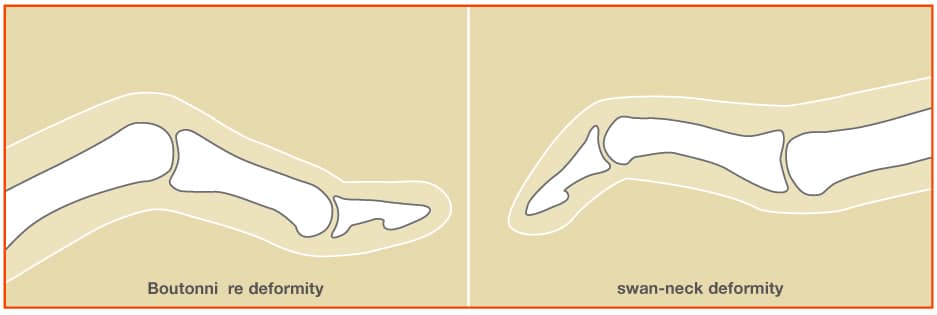Description
In its most literal sense, arthritis means “inflamed joint.” Arthritis describes any condition where cartilage in the joint breaks down. Normal joints consist of two smooth, cartilage-covered bone surfaces that fit together as a matched set and glide against one other. Arthritis can result when these smooth surfaces become irregular as the cartilage breaks down and don’t fit well together anymore, essentially “wearing out.” Arthritis can affect any joint in the body, and it can be debilitating when it affects the hands and fingers.
AnatomyHello
Rheumatoid arthritis is one of the most common forms of arthritis in the hand, in addition to osteoarthritis and post-traumatic arthritis. Rheumatoid arthritis affects the cells that line and normally lubricate the joints (synovial tissue). This is a systemic condition (can affect the whole body), which means that it may affect multiple joints, usually on both sides of the body.
Rheumatoid arthritis of the hand is most common in the wrist and the finger knuckles (the MP and PIP joints (see Figure 1)).
CausehELLO
The joint lining (synovium) becomes inflamed and swollen and erodes the cartilage and bone. The swollen tissue may also stretch the surrounding ligaments, which are the connective tissues holding the bones together, resulting in deformity and instability. The inflammation may also spread to the tendons, which are the rope-like structures linking muscles to bones. This can result in fraying and eventual breaking of the tendons.
SymptomsHello
Stiffness, swelling and pain are symptoms common to all forms of arthritis in the hand. In rheumatoid arthritis, some joints may be more swollen than others. There is often a sausage-shaped swelling of the finger. Other symptoms of rheumatoid arthritis of the hand include:
- A soft lump over the back of the hand that moves when straightening the fingers
- A creaking sound during movement
- Fingers shifting away from the direction of the thumb (see Figure 2)
- Swelling and inflammation of the tendons that bend the fingers, resulting in clicking or triggering of the finger as it bends, sometimes causing numbness and tingling in the fingers (carpal tunnel syndrome)
- Inability to straighten or bend certain fingers or the thumb
- A bent middle finger (Boutonnière Deformity(see Figure 3))
- An over-extended middle joint and bent fingertip (Swan-Neck Deformity (see Figure 3))
Doctor Examination
Your doctor will examine you to determine whether you have similar symptoms in other joints and to assess the impact of the arthritis on your life and activities. The appearance of the hands and fingers helps to diagnose the type of arthritis. X-rays will show certain characteristics of rheumatoid arthritis such as narrowing of the joint space or erosions of the bone. If your doctor suspects rheumatoid arthritis, he or she may request blood or other lab tests to confirm the diagnosis.
Treatment
Nonsurgical Options
Rheumatoid arthritis is primarily treated with medication. Typically, medications for this condition are prescribed by your primary care provider or a rheumatologist. Steroid injections are sometimes helpful, particularly when the condition is more active.
Surgical Options
Surgery may be needed to relieve pain or improve function during the course of the disease, but it is not needed in all cases of rheumatoid arthritis.



